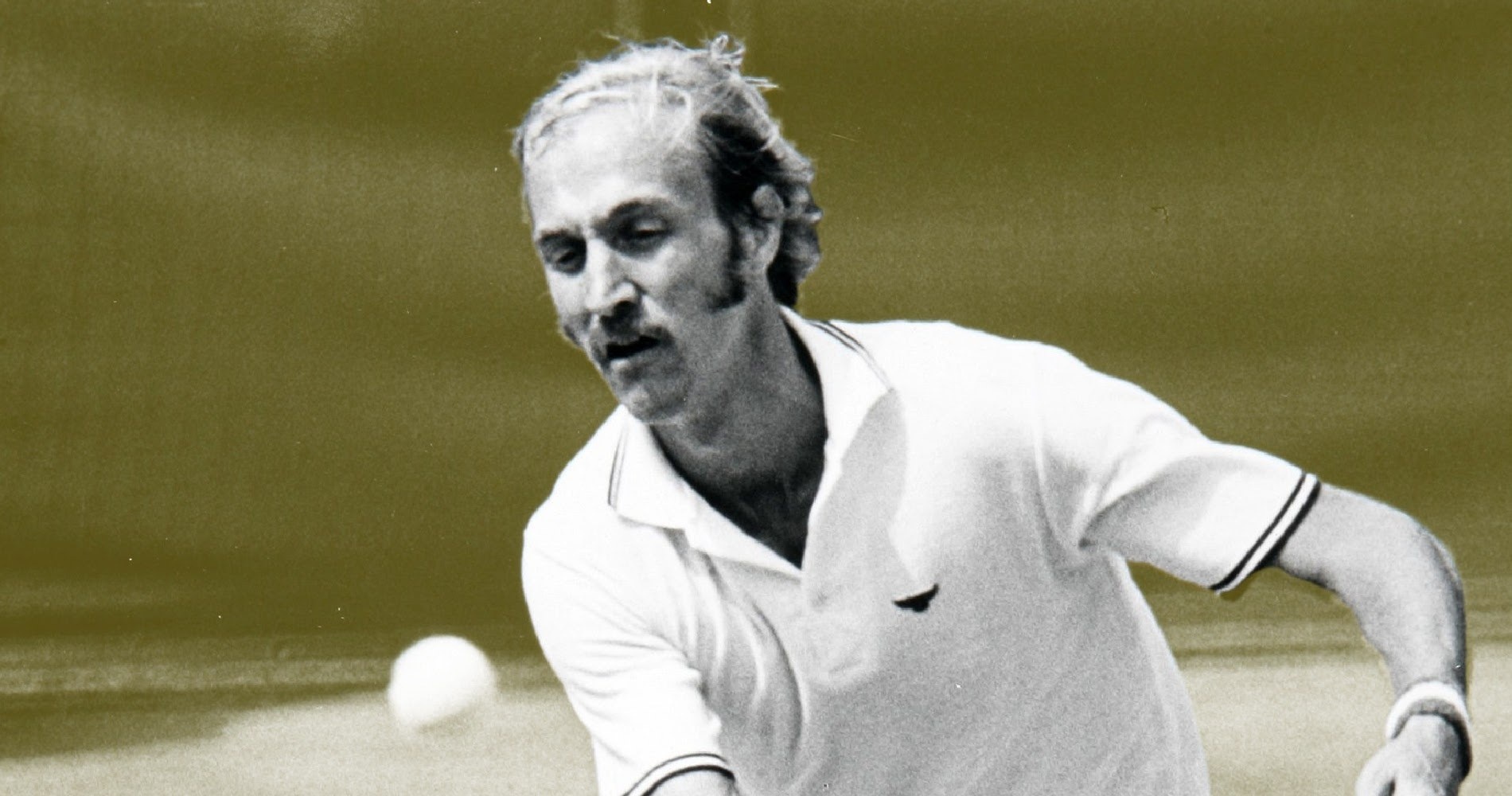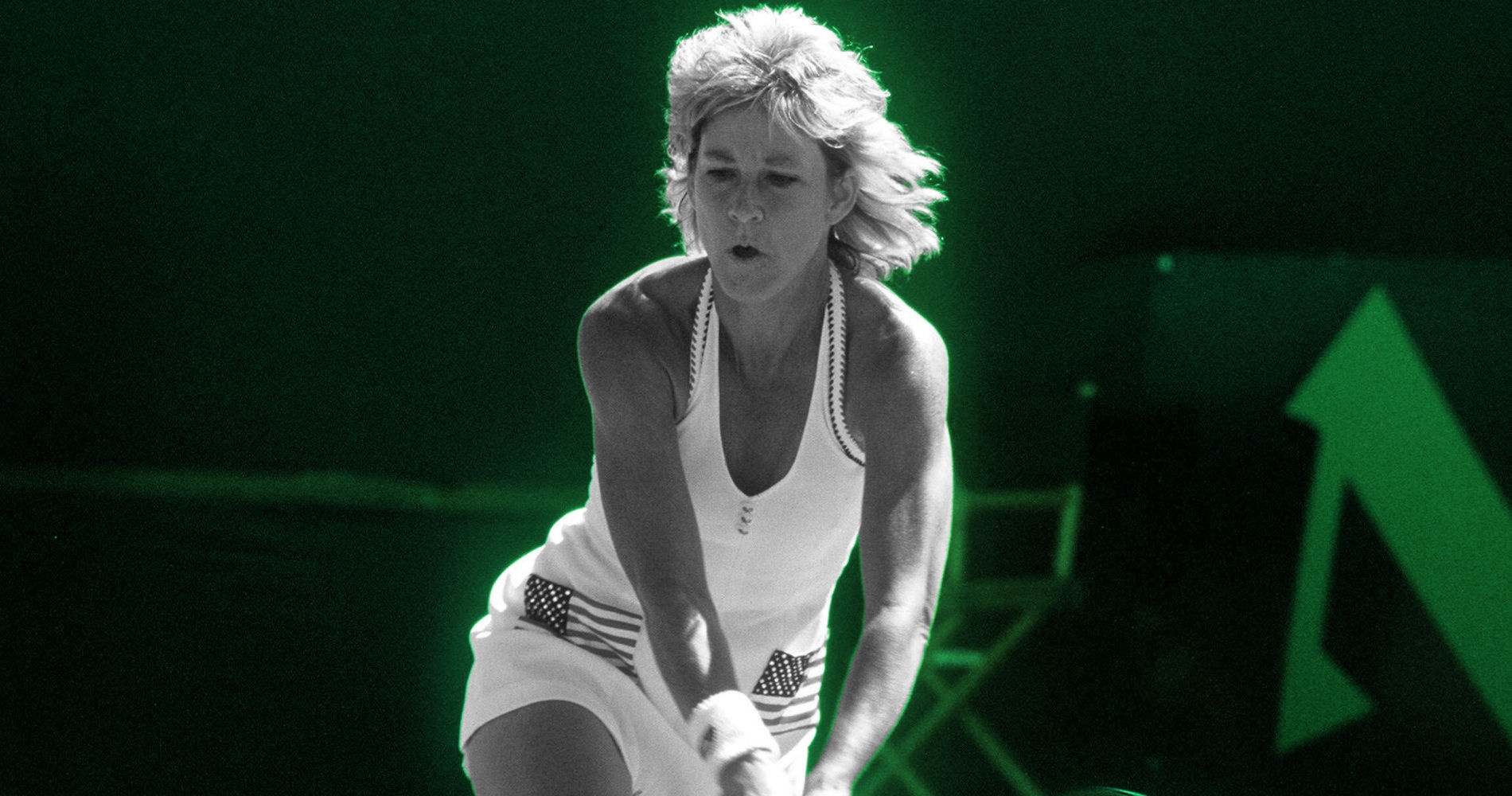October 10, 1971: The day Stan Smith and the United States won the last ever Davis Cup to use the “Challenge Round”
Every day, Tennis Majors looks back to the one of the biggest moments in tennis history. On this day in 1971, Stan Smith beat Ion Tiriac in straight sets to win the last Davis Cup “Challenge Round” in tennis history for the American team
 Stan Smith OTD 10_10 (1)
Stan Smith OTD 10_10 (1)
What exactly happened on that day?
On this day, October 10 in 1971, Stan Smith defeated Ion Tiriac (8-6, 6-3, 6-0) to seal the victory of the United States over Romania in the last ever Challenge Round in the history of the Davis Cup. Heavy rains had fallen on Saturday night, and the officials had spared no effort to dry the courts: they went as far as using a helicopter and setting gasoline on fire in order to ensure the courts were dried.
The players involved: Stan Smith and Ion Tiriac
- Stan Smith: From ballboy reject to Grand Slam champion

Stan Smith was born in 1946 in South California. As a kid, he went to get a job as a ball boy for the Davis Cup, but was turned down because the organisers thought he was too clumsy. Smith later went on to play collegiate tennis at the University of South Carolina, and in 1968, he started playing on the tennis tour.
By September 1971, he had already claimed 11 single titles, including the 1970 Stockholm Open, where he defeated Arthur Ashe (5-7, 6-4, 6-4), the 1970 Tokyo Masters, where he beat Rod Laver (4-6, 6-3, 6-4) and the 1971 Queen’s Club Championship, where he dominated John Newcombe (8-6, 6-3).
Three weeks after his triumph at Queen’s Club, Newcombe took his revenge against Smith in a close Wimbledon final (6-3, 5-7, 2-6, 6-4, 6-4). A few weeks later, Smith claimed his first Grand Slam title at Forest Hills, after he beat Jan Kodes in the final (3-6, 6-3, 6-2, 7-6). It was the first time that a US Open final ended with a tiebreak, which had been introduced only in 1970.
- Ion Tiriac: the Brasov Bulldozer who became a Grand Slam doubles champion
Ion Tiriac was born in 1939. Because of his birth in Transylvania, Romania, he was nicknamed “the Brasov Bulldozer” or “Count Dracula”. Gifted in several sports, Tiriac was at first a table tennis prodigy, before being part of the Romanian hockey team at the 1964 Winter Olympics in Innsbruck, Austria.
Once he focused on tennis, he became good enough to reach the quarter-final at Roland-Garros in 1968, which was the first Grand Slam of the Open Era. There, he came close to beating the great Rod Laver, ranked No 1 in the world.
But despite taking a two-sets-to-love lead, Tiriac was eventually defeated by Laver (4-6, 4-6, 6-3, 6-3, 6-0). He was more successful in doubles, usually partnering countryman Ilie Nastase, with whom he reached the Roland-Garros semi-finals twice (1968, 1969) before eventually triumphing in 1970, when the duo beat Arthur Ashe and Charlie Pasarell in the final (6-4, 6-3, 6-2).
The place: Olde Providence Racket Club, Charlotte, North Carolina
The 1971 Davis Cup Final between the United States and Romania was held at the Olde Providence Racket Club in Charlotte, North Carolina. This would be the last time that the Davis Cup would be played according to the Challenge Round format, under which the winner of the previous edition (the United States) automatically qualified for the final, while the Challenger (Romania) had to play no fewer than six ties before facing the defending champions.
The facts: Helicopter and gasoline required to dry courts after heavy rain
In 1971, the United States, as the defending champion of the Davis Cup, hosted the final in Charlotte, North Carolina. The challenger, Romania, had beaten no less than six other countries to get into the Challenge Round. First, Ion Tiriac and Ilie Nastase had to win the Europe Zone B tournament, defeating Netherlands, Israel, Yugoslavia and West Germany. After that, they had to win the Inter-Zonal tournament, beating India and Brazil.
After the wrong Romanian national anthem had been played at the start of the tie, things kept going from bad to worse for the Challenger team on the first day. Stan Smith easily beat Nastase (7-5, 6-3, 6-1), and Tiriac blew a two-sets-to-love lead, losing to Frank Froehling (3-6, 1-6, 6-3, 6-1, 8-6).
At this point, the Romanian duo were used to playing doubles together. They were an experienced team, having claimed several titles, including Roland-Garros in 1970. “Count Dracula” and “The Bucharest Buffoon”, despite their funny nicknames, left nothing to chance against Smith and Erik van Dillen, dismissing the American duo in straight sets (7-5, 6-4, 8-6).
On Saturday night, heavy rain fell on Charlotte. The officials were determined to dry the courts and avoid any delay, and they were also conscious that humid clay courts would slow down the game, which would work in the favor of Romania. Sparing no effort (and expense), they rented a helicopter to hover over the stadium. However, this spectacular effort proved inefficient, so it was decided to douse petrol on the tennis court, and set it on fire. This time, the court was actually dried, to the point where it did not feel like a clay court any longer – but more like asphalt.
This was great news for Smith, who had learned to play on cement while growing up in California. The 24-year-old American was only playing his fourth Davis Cup match against the experienced Tiriac, who had played more than 50. However, on such a fast surface, his serve-and-volley game was too puzzling for the Romanian. Smith prevailed in straight sets (8-6, 6-3, 6-0) sealing the American victory in the last Challenge Round in tennis history.
What’s next? Stan Smith and Ion Tiriac meet again one year later in Davis Cup final
The two players would face each other one year later in the 1972 Davis Cup final, which was held in Bucharest. After a controversial match, during which he would claim being cheated by the linesmen, Smith would prevail in five sets, 4-6, 6-2, 6-4, 2-6, 6-0.
Smith, who was already considered as a great player, would start a two-year period where he would be one of the most dominant players in the game. He would claim a second Grand Slam title, at Wimbledon in 1972, defeating Ilie Nastase in the final (4-6, 6-3, 6-3, 4-6, 7-5). That year, winning no less than nine tournaments, he would be considered as the world No 1, although the ATP ranking did not exist at the time. In total, Smith would win 37 titles in his entire career, and he would also claim five major titles in doubles, partnering Robert Lutz. Smith would remain famous decades into his retirement because of the popular sneakers made by Adidas and named after him.
After retiring from professional tennis, Ion Tiriac would become a famous sports manager (in the 1980s, he would discover and drive a young German player named Boris Becker) and wealthy businessman. His investments would prove very successful, making Tiriac a billionaire and the richest man in Romania at one point. Tiriac is also considered one of the most influential figures in tennis.









